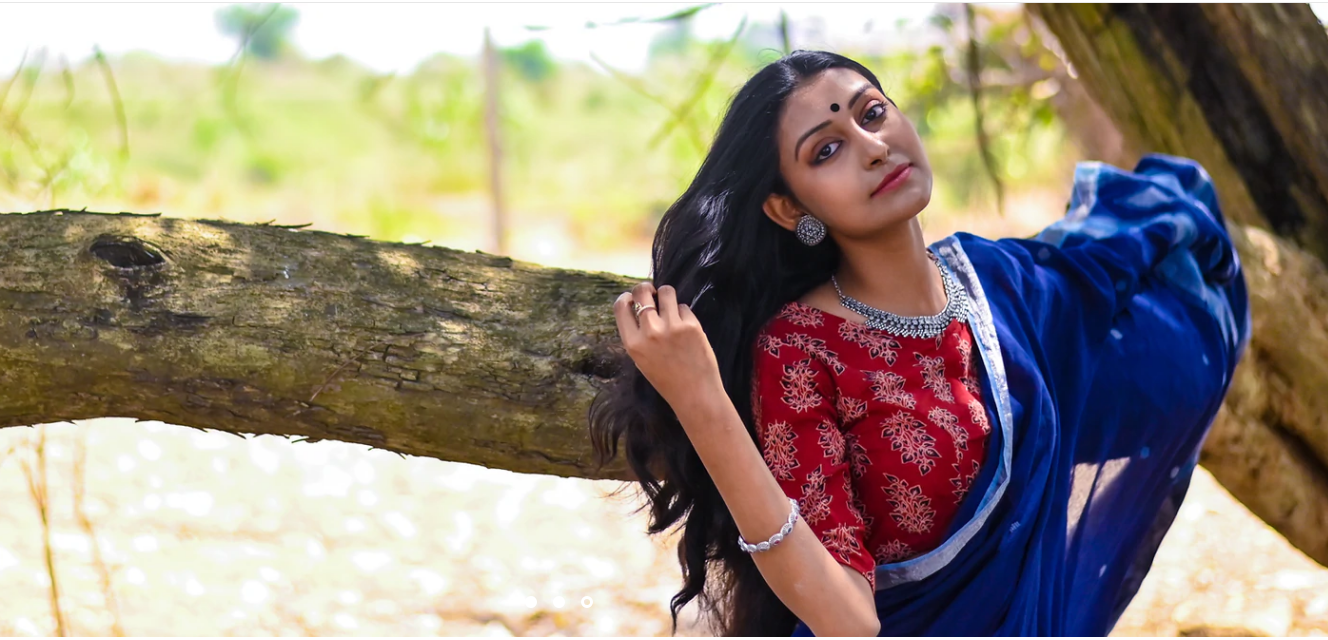Stories from the home of handloom
What really makes a handloom so distinctive? What is it about a handcrafted fabric that enhances its appeal and makes it all the more desirable?
Painstakingly woven by hand, embedded with stunning intricacies, no standard patterns, exquisite motifs, and above all, the craftsmanship. These are few of the many factors that make handloom sarees truly one-of-a-kind.
Not only does the handloom industry bring alive the colours of our rich heritage, it also promotes the work of our rural artisans, helping them build a livelihood.
Are you ready to hear stories of some of your favourite handloom stories? Let’s take you through the tales of their origin and how they came to be.
Begumpuri
Bengal has always been famous for its culture of fine cotton weaving. Artisans and craftsmen from many rural areas across the state have been striving to keep the weaving tradition alive. One such small town where weavers are working day and night to create unique patterns and appeal to saree aficionados is Begumpur. And this is where the origin of Begumpuri sarees lie. Having emerged from rustic lands, today the Begumpuri has become a part of contemporary ethnic fashion. So, what is it that makes the Begumpuri so special? These sarees are loosely woven, are often light in weight, and translucent; decorated with figured motifs and stripes. Serrated edge motifs adorn the border that is contrasting in colour, while the texture of the saree allows you to enjoy the bliss of comfort.
Dongria
This is a story from the hills, the Niyamgiri Hills of Odisha. These hills are located in the Rayagada and Kalahandi districts in the state and that is where one encounters the Dongria Kondh tribe. Artisans from this tribe have worked hard to keep their tribal art form alive that we today know as Dongria. Handwoven with care, these sarees have a rare quality to them that makes them exceptionally unique. Unlike Begumpuri, Dongria sarees are thick weaves, and include a vibrant play of colours in their designs. Often identified by their distinctive geometric patterns, the Dongria saree has today made its way from the rustic heartlands to fashion runways.
Dhonekhali
Another tale of exquisite craftsmanship from the rustic towns of Bengal; the Dhonekhali saree. Born in the Dhaniakhali region in Chinsurah, Bengal, the Dhonekhali saree was traditionally ‘kora’ i.e. off white/grey in colour with contrasting red/black plain border. The story of this dyed yarn goes back to 1942 and over the years, the Dhonekhali has evolved in the ways that it's created as it embraced colours and patterns into its make and has today become one of the most popular handloom saree.
Dhakai Jamdani
Here's a surprising anecdote about this very popular type of saree. The origin of Jamdani traces back to 3rd Century B.C. The mention of this fabric can be found in Chanakya's Arthashastra which referred to it as a fine cloth from the Bangla region. As far as Dhakai is concerned, the name is explanatory of its place of origin which is Dhaka, Bangladesh. The name Jamdani however is Persian in origin, with "Jam" meaning floral, and "Dani" stands for vase. The name transcends into the design of these sarees which have stunning floral motifs woven into the fabric. This form of art particularly prospered during the Mughal era, and has now begun to regain it's long-lost popularity. Jamdani weaving is known to be a time-consuming and tedious process. Given the amount of effort put in to create a Jamdani saree, it is not at all astonishing that this is considered to be one of the most precious fabrics.
The stories could go on, and one will never run out of things to say about the art of handloom. Blending culture and heritage with contemporary styles, this industry continues to thrive. And you can find all these gorgeous sarees, at one destination, Uttariya.

